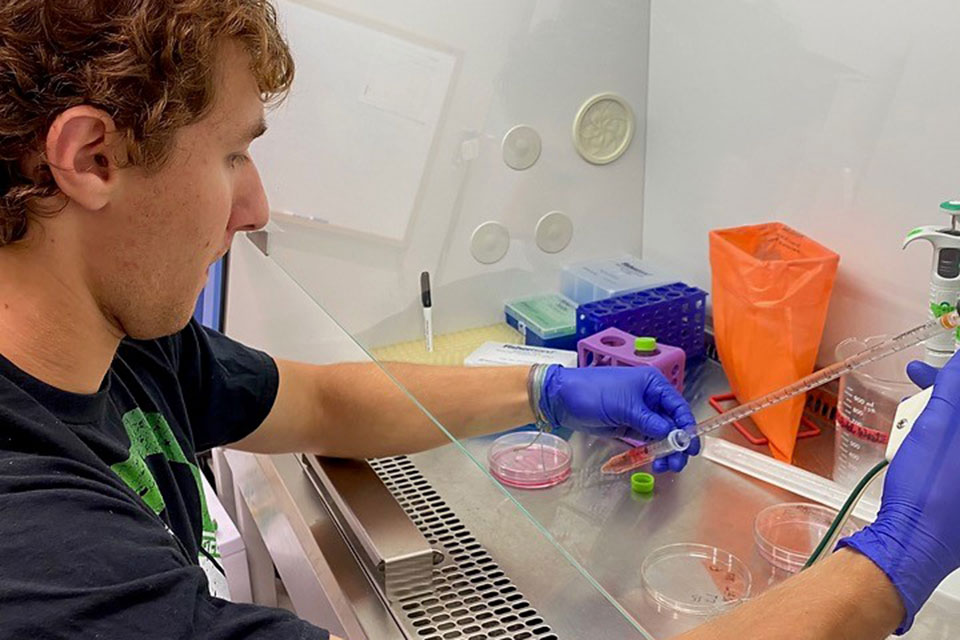Research Grants Support Opportunities for Student-Faculty Collaboration
In the spring and fall 2024 semesters, Dr. Fernando Ontiveros, associate professor of biology, worked with the Department of Biomedical Engineering at the University of Rochester on a National Science Foundation (NSF) Partnership for Innovation grant that helped fund a student research experience.
The grant, in addition to Fisher’s Summer Research program, supported Dominic Tabechian, a 2024 graduate who majored in biology and has worked on the project since the summer of 2023. The grant also supports faculty work during three consecutive summers.
The grant funds applied science to translate academic discovery into products. “We are integrating our microfluidics devices with nano membrane chips pioneered by our collaborators to design and build diagnostic devices,” said Ontiveros. “The devices are able to detect a large range of biological particles, from red blood cells to bacteria and viruses.”
According to Ontiveros, affordable and fast-acting diagnostic devices can not only advance the biosensing field, but also improve disease detection at home and in medical care facilities without the need for laboratory processing.
“Dominic has designed, fabricated, and tested devices to detect red blood cell aggregation, a proof of concept achievement that opens the door to a multifunctional device,” Ontiveros said. “He has also built chips that take advantage of capillary forces to move fluids within the devices, a first in our lab. At the midpoint through the funding period, he leaves a functional device that can be used for future testing by other students joining the lab.”
Research grants provide students ample supplies, tests, and time to work closely on their projects. “Providing access to the Simpore chips used in the research was a big contribution from the grant. These aren't cheap to come by and it would have been much more tedious to only have a tiny supply of them,” added Tabechian. “With more access, we were able to have tons of trial and error in our designs. We were able to test and produce the functional microfluidic designs much faster because of the grant's support.”
Tabechian highlighted that the several semesters he spent on the project allowed him to adapt to the fine motor skills required to make microfluidic devices, as well as work through design issues and monitor design improvement. Upon completing the project, he was able to present his work at a conference through his membership in the Undergraduate Summer Fellows Research Program.
A recent graduate, Tabechian currently works as a patient care technician at Strong Memorial Hospital, and has plans to attend graduate school to become a physician’s assistant.
This article was written by Brooke Eastman, a senior media and communication major. Eastman currently serves as an intern with the Marketing and Communications department at Fisher for 2024-25.
